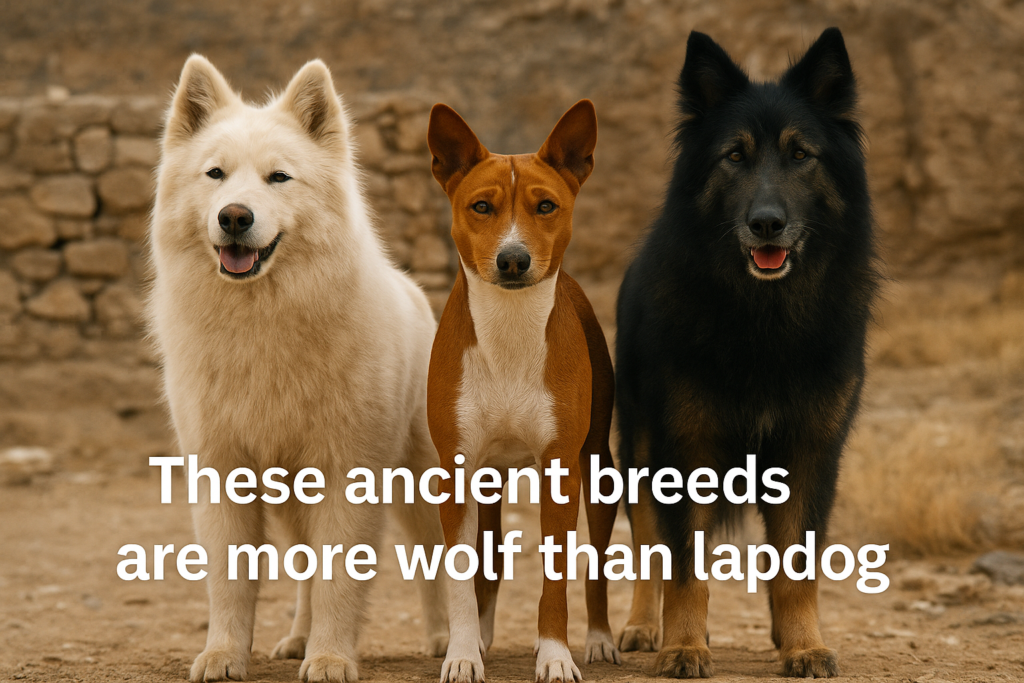
1. Saluki
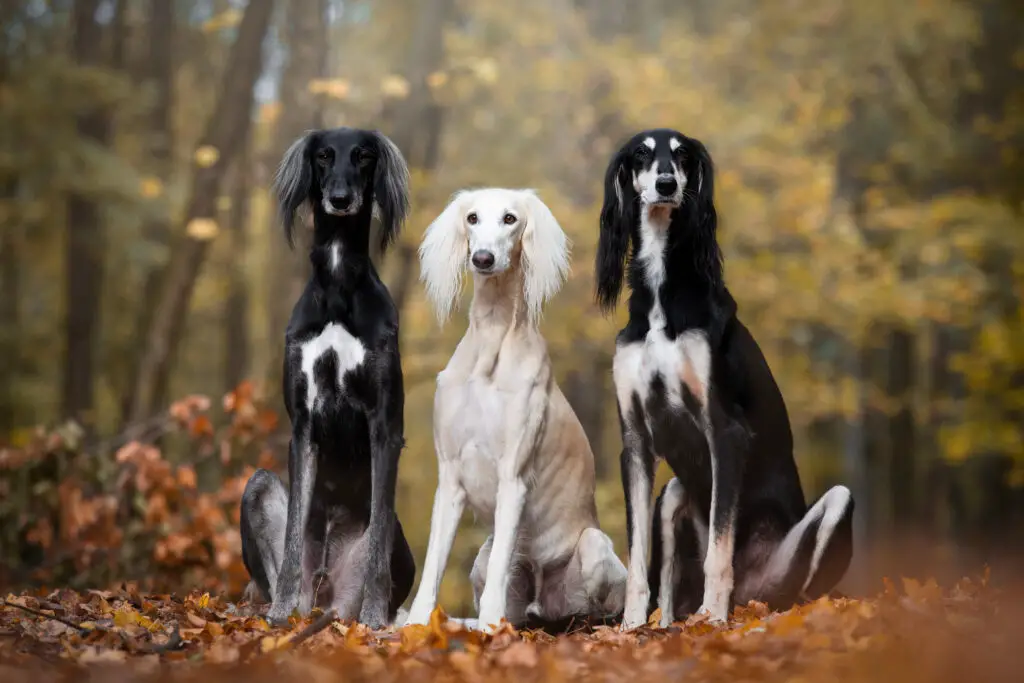
With its slender frame and feathered ears, the Saluki may look like a runway model of the dog world, but don’t let the elegance fool you. This breed dates back over 5,000 years and was once revered as the royal dog of ancient Egypt. Carvings of Saluki-like dogs have been found in Sumerian tombs and Egyptian artifacts, where they were buried alongside pharaohs and painted on temple walls. Known for their lightning speed and graceful build, Salukis were bred by nomadic desert tribes to chase down gazelle, a task requiring both endurance and explosive speed. Their narrow chests and long legs aren’t just for show; they’re the tools of a born sprinter who evolved for survival in the sand.
Nothing about Saluki’s personality feels modern. Reserved and deeply independent, they tend to choose one person to trust and often ignore everyone else. Their rare double-suspension gallop lets them soar across the terrain at over 40 mph, giving them a movement more like a cheetah than a canine. Despite their delicate looks, they’re durable, weather-hardened animals bred for sweltering heat and wild hunts. Don’t expect them to beg for treats or follow commands to show; this is a dog with roots in pharaonic tombs and wind-swept caravans. Source: American Kennel Club
2. Basenji
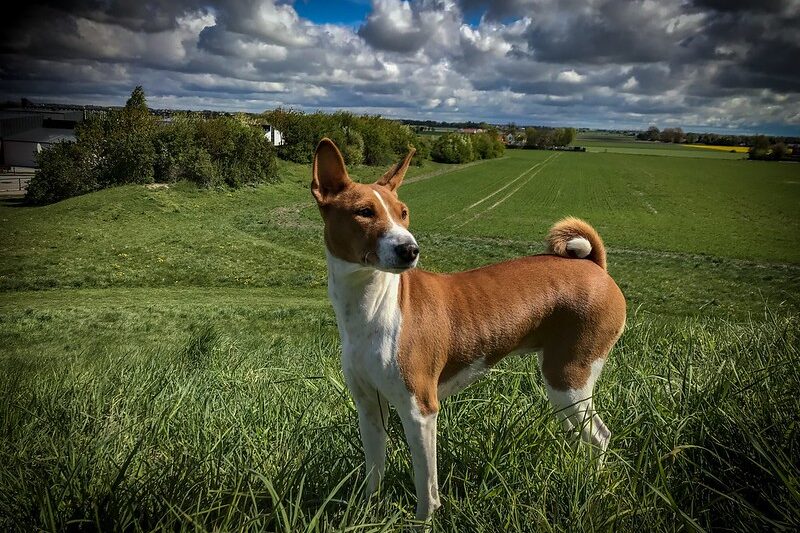
In the dense forests of central Africa, long before the idea of lapdogs existed, the Basenji were hunting silently at the sides of tribespeople. Sometimes called the “barkless dog,” it earned its reputation not from quiet obedience but from a uniquely shaped larynx that creates yodel-like vocalizations instead of typical dog barks. Carvings resembling the Basenji appear in Egyptian tombs over 4,000 years old, prized for their stealth, speed, and squirrel-like agility. In Congo, they worked alongside hunters, flushing prey into nets and signaling danger not with barks, but with keen awareness.
Compact in size but massive in personality, the Basenji weighs around 20 pounds yet carries the energy of a much larger animal. Their movements are cat-like, and their grooming habits are meticulous. In the dense forests of central Africa, long before the concept of lapdogs emerged, the Basenji dogs hunted silently alongside tribal people. Often referred to as the “barkless dog,” they earned this name not from quiet obedience but because their uniquely shaped larynx produces yodel-like vocalizations instead of traditional dog barks. Carvings resembling Basenjis have been found in Egyptian tombs dating back over 4,000 years, where they were valued for their stealth, speed, and agility akin to squirrels. In the Congo, these dogs worked with hunters to drive prey into nets and alert them to danger—not with barks, but through their keen awareness. Source: National Institutes of Health
3. Afghan Hound

With a windblown coat and gaze like royalty, the Afghan Hound is equal parts glamor and grit. This breed emerged thousands of years ago in the mountainous regions of Afghanistan, bred to hunt leopards and gazelles across rocky terrain with shocking agility. Its elegance wasn’t ornamental but armor against cold nights and sun-scorched days. In tribal communities, these dogs were so valued that they were rarely sold or traded, their long, silky fur cloaking muscles honed for survival. By the time they reached Western dog shows in the 1920s, they were already veterans of a different kind of runway.
Speed is their native language. Afghan Hounds move with a spring-loaded gait that feels more like flight than run, and they can easily hit speeds over 40 mph. Training one, though, can feel like convincing a cat to do calculus. They’re intelligent but famously aloof, with a stubborn streak as long as their flowing tail. This isn’t a people-pleaser, it’s a dog bred to think for itself, outrun predators, and return home only when it feels like it. Source: American Kennel Club
4. Akita Inu

In the snow-covered mountains of northern Japan, the Akita Inu emerged not as a showpiece but as a symbol of honor, loyalty, and fearlessness. Archaeological remains link this breed to hunting dogs used over 1,000 years ago, and samurai warriors refined its modern form in the 1600s. Bred to take down wild boar and bears, the Akita was also a royal guardian and household protector. It became a symbol of good health and longevity, with statues of Akitas traditionally given to families during times of birth or recovery.
Muscular and stoic, the Akita isn’t quick to trust. It prefers to observe in silence, deciding on its own whether you’re a friend or a threat. Though its thick double coat and fox-like face make it almost cuddly in appearance, this is a breed with warrior blood. It doesn’t bark without purpose and won’t back down when challenged. In the wrong hands, it’s too much dog, but in the right ones, the Akita is an unwavering companion built for winter, loyalty, and battle. Source: Japan Kennel Club
5. Alaskan Malamute
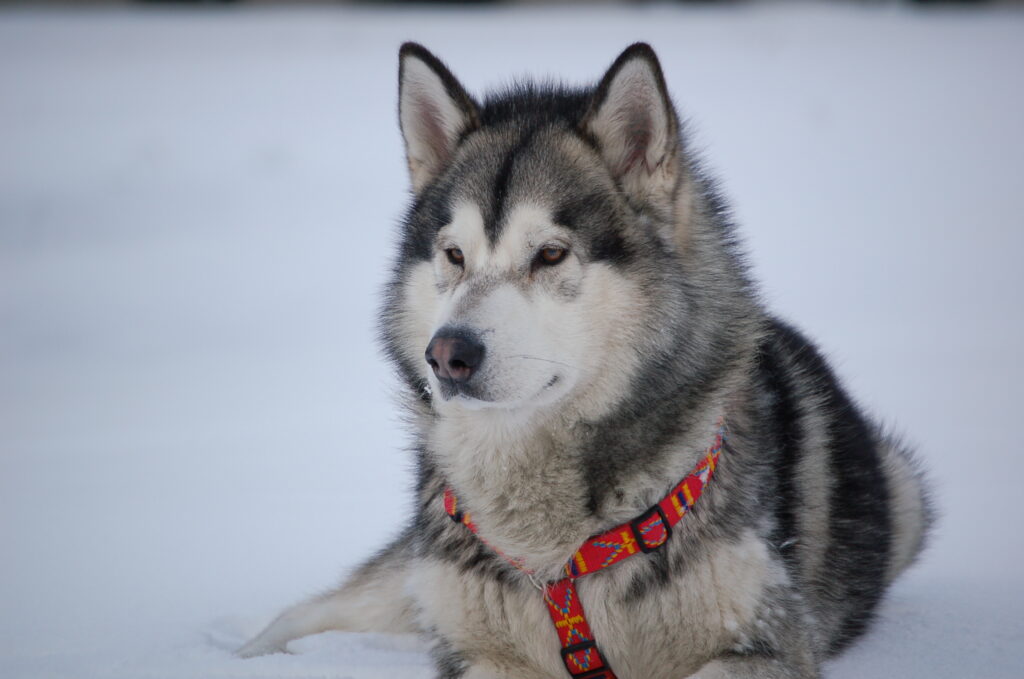
Long before tourists explored Alaska’s frozen rivers, the Malamute was already there, hauling heavy loads across the tundra, hunting seals, and curling up with Inuit families for warmth on subzero nights. This ancient breed was developed by the Mahlemiut people thousands of years ago, built not for speed like the Siberian Husky, but for pure, unrelenting endurance. These dogs helped humans survive in places too harsh for crops or comfort, pulling sleds through waist-deep snow and standing guard under the northern lights.
This isn’t a dog that needs pampering. With paws designed to grip ice and a dense double coat that shrugs off blizzards, the Malamute thrives when given work and wide spaces. It communicates through howls, not barking, and often behaves more like a wolf than a golden retriever. Loyal to its family but stubborn as stone, it doesn’t bend easily to commands. Instead, it responds to mutual respect, earned in snowstorms and silence. Source: Cornell University College of Veterinary Medicine
6. Tibetan Mastiff

In the thin air of the Himalayas, the Tibetan Mastiff earned its place not through obedience but sheer force of presence. For centuries, these dogs stood guard over yaks, monasteries, and nomadic families, often working alone at altitudes that would challenge even seasoned climbers. Descriptions of mastiff-like dogs appear as early as the Tang Dynasty, where they were sent as diplomatic gifts to China and Persia. But in their native Tibet, they remained more legend than pet, silent sentinels bred to think independently and react without instruction. Their thick mane-like coat and deep bark made them look like lions and sound like thunder.
A Tibetan Mastiff doesn’t behave like most dogs. It weighs upwards of 150 pounds and carries itself like royalty crossed with a bouncer. Socialization must start early. This is not a breed that learns “sit” to please you. It’s known for guarding by night and sleeping all day, tuned to its internal clock. While fiercely loyal to its chosen humans, it can be aloof, stubborn, and completely indifferent to strangers. For some, it’s too much dog. But for those who understand it, the Tibetan Mastiff isn’t just ancient, it’s elemental. Source: Science
7. Canaan Dog

This is a breed shaped by sandstorms, not show rings. The Canaan Dog traces its lineage back more than 9,000 years, wandering the deserts of what is now Israel, Palestine, Jordan, and Syria. These semi-wild dogs weren’t bred in kennels; they evolved naturally on the outskirts of nomadic settlements, herding livestock and guarding camps without ever being tamed in the modern sense. Archaeologists have uncovered canine skeletons in tombs dating back to 6,000 BCE that closely match today’s Canaan Dog, suggesting a breed that has survived war, colonization, and industrialization with barely a tweak to its DNA.
Despite its survivalist history, the Canaan Dog carries itself with alert elegance. It’s medium-sized, with a wedge-shaped head, upright ears, and a tail that curls tightly over its back. But the eyes, intelligent, watchful, and slightly wary, reveal its wild past. These dogs are naturally clean, vocal, and suspicious, bonding deeply with their people while keeping strangers at a polite distance. They are still used today in Bedouin communities, but they also thrive in modern homes, as long as that home respects their independence and doesn’t try to mold them into a golden retriever. Source: AKC
8. New Guinea Singing Dog

Hidden in the cloud forests of Papua New Guinea, this elusive breed sings instead of barking, and for decades, scientists thought it was extinct. The New Guinea Singing Dog resurfaced in 2016, and it was discovered living wild in the remote highlands, far from human habitation. Genetically distinct from other canines, the breed shares DNA with the first dogs to accompany humans out of Asia over 6,000 years ago. Ancient and almost untouched by selective breeding, it was once semi-domesticated by Indigenous tribes, revered for its vocal abilities and uncanny intelligence. Their howls, layered and melodic, echo eerily across the jungle like something between a whale call and a flute.
These dogs are physical anomalies despite their small size, usually under 30 pounds. They have flexible spines that let them twist mid-air, double-jointed limbs, and climbing skills that put most cats to shame. Their eyes are keen, their instincts razor-sharp, and their temperament closer to a fox than a pet. Even in captivity, they resist training, preferring to observe and decide rather than react. For conservationists, they represent a living relic of canine evolution. For the few who live with them, they’re a reminder that not all dogs are meant to be tamed. Source: National Geographic
9. Shar Pei
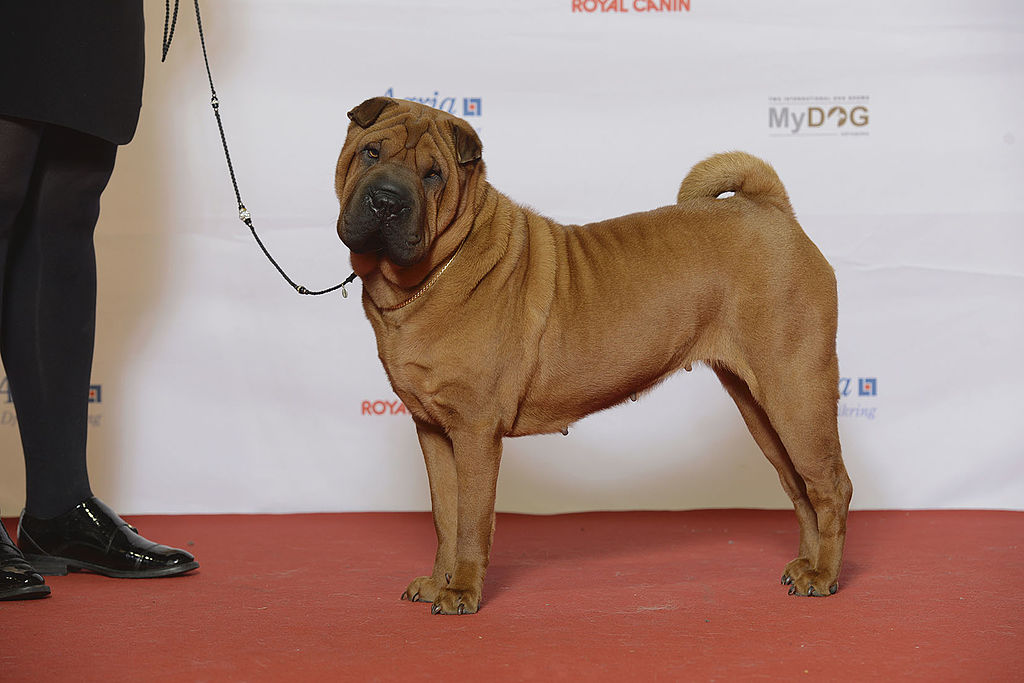
Before its deep wrinkles and sandpaper skin became the stuff of Instagram fame, the Shar Pei served a far more brutal purpose. Originating over 2,000 years ago in China’s Han Dynasty, this breed was used to guard farms and fight off intruders, human and animal alike. Early pottery and scroll art depict broad-muzzled, tightly curled-tailed dogs remarkably similar to today’s Shar Pei, suggesting little has changed genetically over millennia. Its extra skin was functional: in fights, it allowed the dog to twist and bite back even when seized. They guarded estates, herded livestock, and protected temples for centuries, revered as guardians and good-luck charms.
Despite its now-civilized appearance, a Shar Pei still carries the instincts of a lone sentinel. It’s not a people pleaser. It chooses its loyalty carefully, often devoting itself to one person while remaining neutral or aloof toward others. The iconic blue-black tongue it shares with only a handful of breeds marks it as something truly ancient, a biological quirk passed down through thousands of years. It’s clean, quiet, and fiercely territorial, with a confidence that borders on arrogance. If you want a dog that lives to entertain guests, look elsewhere. If you want a calm, commanding presence with deep ancestral roots, this is your dog. Source: Science Advances
10. Pharaoh Hound
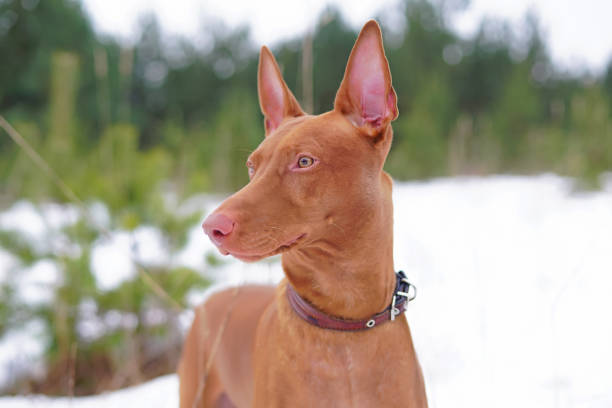
Few breeds carry a name that is as grand and misleading. While the Pharaoh Hound is often associated with ancient Egypt, its history is more layered. Though the breed strongly resembles the hunting dogs carved into temple walls and painted in tombs 5,000 years ago, it was preserved far from the Nile on the island of Malta. There, it became known as the Kelb tal-Fenek, or “rabbit dog,” used by farmers to flush prey across rocky terrain. With a lithe build, copper coat, and ears always at attention, the dog’s look hasn’t changed in millennia. Whether in North Africa or the Mediterranean, its job was the same: speed, silence, and surgical precision.
This isn’t a couch cuddler. Pharaoh Hounds are high-energy sprinters, with the rare ability to track by scent and sight. They are notoriously clever escape artists and can jump, dig, and disappear if left unsupervised. One of their quirkiest traits? They blush. When excited, their nose and ears turn a pinkish red, a genetic party trick that few breeds share. Though graceful and social with family, they retain a streak of independence that can frustrate inexperienced owners. To live with one is to accept that elegance can still come with edge. The earliest human civilization, the Pharaoh Hound, was equal to art and athletics. Source: American Kennel Club
11. Samoyed
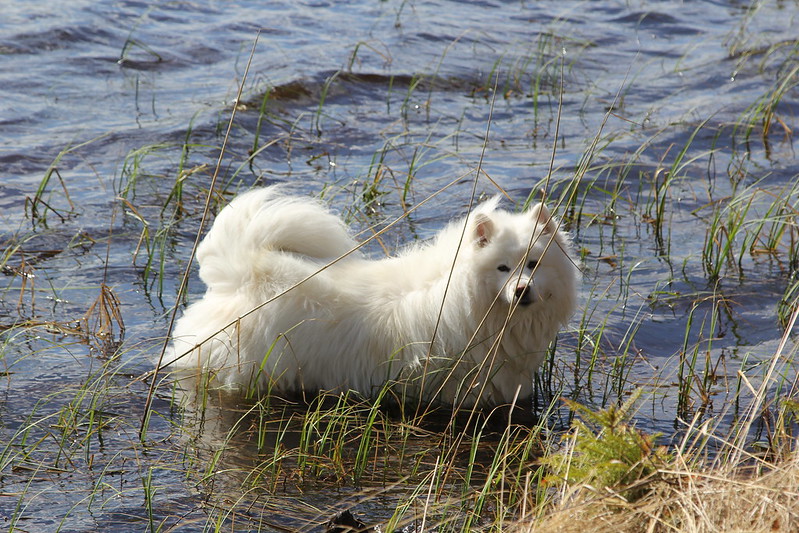
White as the Siberian snowdrifts, it was born to conquer. The Samoyed isn’t just beautiful, it’s one of the oldest sled and herding breeds on Earth. These dogs traveled with the nomadic Samoyedic peoples of Russia’s frozen north for over 3,000 years, pulling sleds, guarding camps, and even sharing body heat with humans on bitterly cold nights. Their famously upturned mouths, the “Sammy smile,” aren’t just cute. It prevents icicles from forming when they breathe in frigid air. Unlike many working breeds that slept outside, Samoyeds lived alongside their families in tents, treated not just as workers, but as kin.
Despite their angelic looks, Samoyeds are no pushovers. Underneath all that fur is a muscular, determined animal with boundless stamina and a strong sense of purpose. They can haul several times their weight, yet remain playful and people-focused. They’re also chatty, prone to woo-wooing their opinions loudly and often. While they’re highly trainable, they don’t take kindly to boredom or confinement and shed in blizzards that rival the storms they were bred to endure. This is not a pet for neat freaks, it’s a legacy breed with ancient roots and a heart as warm as its coat. Source: National Human Genome Research Institute
12. Chow Chow
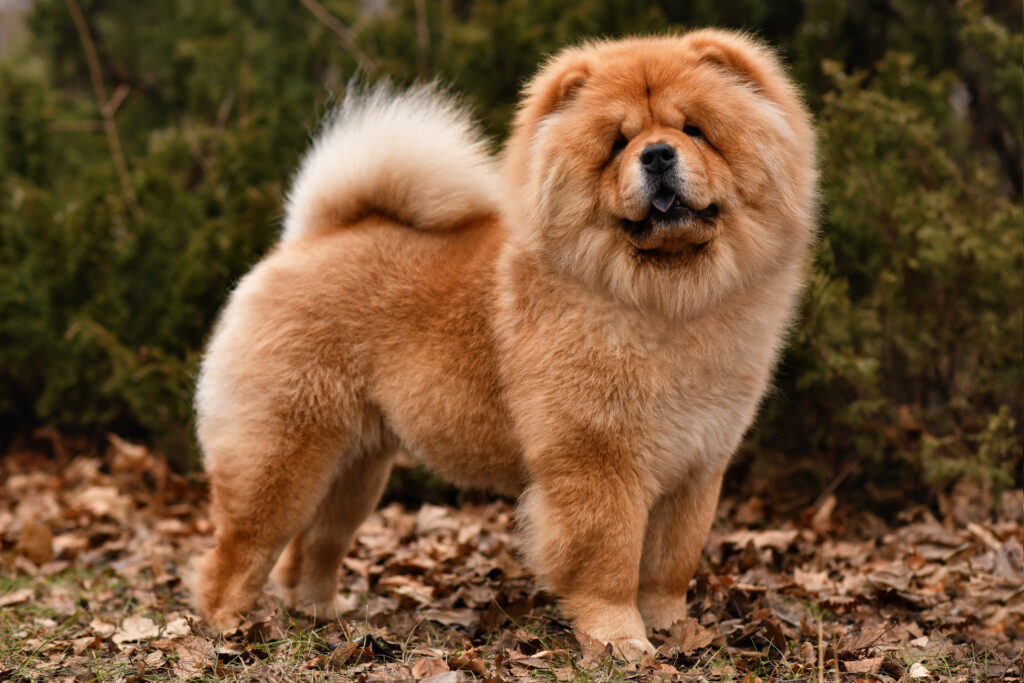
Walk into a room with a Chow Chow and you’ll be met with a gaze that says, “I’m not impressed.” One of the oldest breeds in the world, the Chow dates back more than 2,000 years, originating in northern China where it served as a guard dog, hunter, and status symbol for nobility. Some historians believe it was the inspiration behind the mythical Chinese guardian lions, “Foo Dogs,” that flanked temple entrances. Their lion-like ruff and proud carriage make it easy to see why. Their presence is commanding, their loyalty fierce, and their independence unmistakable.
Unlike most modern breeds, the Chow doesn’t aim to please. It’s clean, quiet, and carries itself with the regal detachment of a monarch observing commoners. That iconic blue-black tongue isn’t just for show; it’s a rare genetic trait shared with few other animals. They don’t fetch, cuddle on demand, or come when called unless they feel like it. But when a Chow bonds with you, the trust is deep and enduring. They may not be social butterflies but were never meant to be. These dogs guarded emperors, not birthday parties. Source: Chinese Academy of Sciences
13. Azawakh
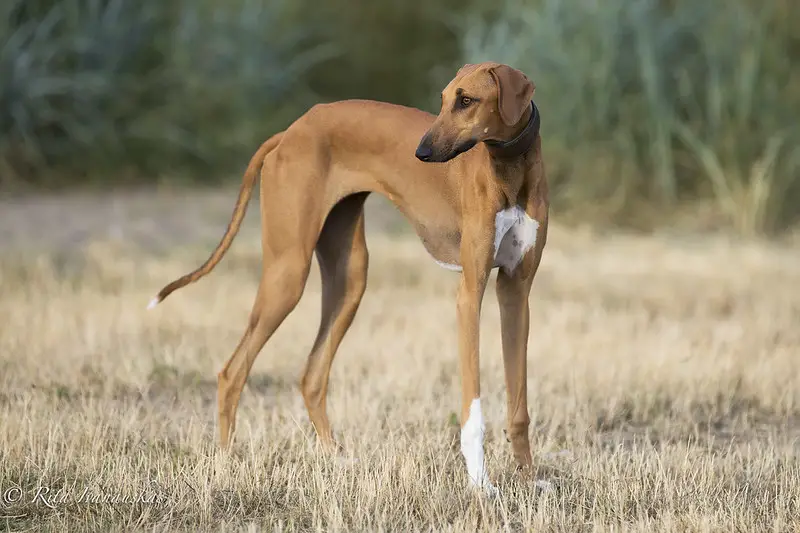
If a shadow could sprint, it would look like an Azawakh. This desert-born sighthound from the Sahel region of West Africa has run beside nomadic Tuareg tribes for over 1,000 years, protecting camps and chasing gazelles across scorched terrain. Their lineage is likely far older, etched into Saharan rock art that predates recorded history. Known as more than just hunters, Azawakhs were decorated with jewelry, slept inside family tents, and were treated as living treasures. Their value wasn’t based on appearance; it was earned through performance and loyalty in one of the harshest climates on Earth.
They move like dancers and hit top speeds with barely a sound. Weighing as little as 35 pounds, Azawakhs are lean but shockingly strong, with long legs and tight skin that show every muscle twitch. They form intense bonds with their humans but remain wary of outsiders. Don’t expect a wagging tail at the dog park. These dogs are instinctive, intelligent, and proud, often choosing distance over friendliness. They are the opposite of ornamental, they’re the real thing, still shaped by the desert and the chase.
Source: American Azawakh Club Association
14. Xoloitzcuintli
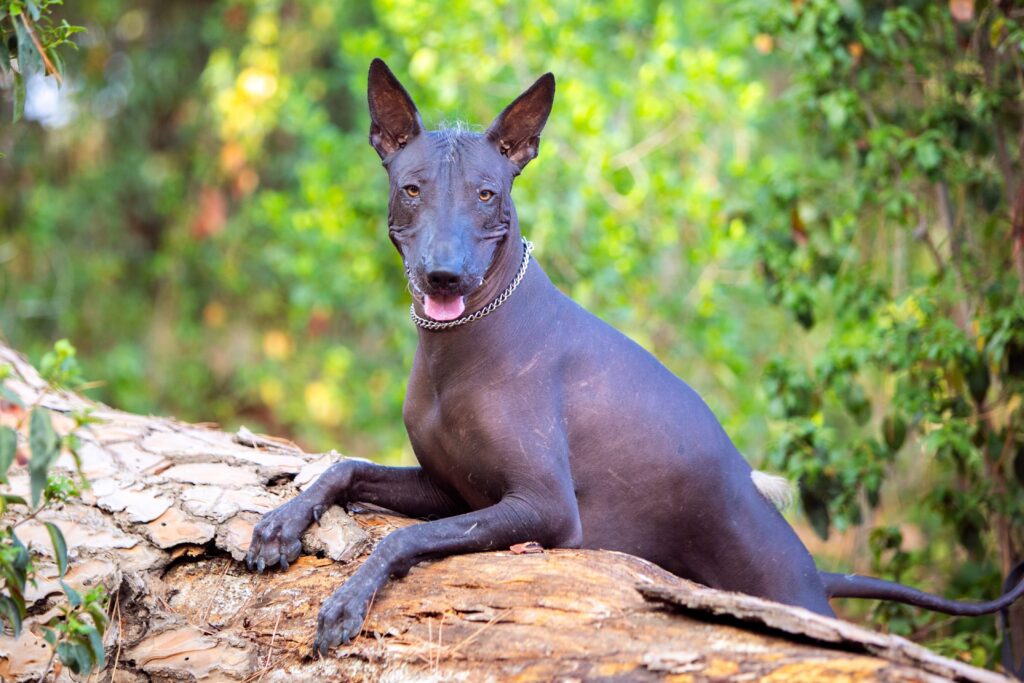
Pronounce it “show-low-eats-queent-lee” and you’ll already be ahead of the game. This ancient Mexican breed, the Xolo, has been around for over 3,000 years, serving as guardian and spiritual guide for the Aztec, Maya, and Toltec civilizations. These dogs were believed to protect the home from evil spirits and escort souls to the afterlife. Their hairless bodies weren’t a flaw; they were revered as sacred and therapeutic, often curled up next to people to relieve pain with their natural warmth. Statues of Xolos have been found in burial sites across Mesoamerica, confirming their deep-rooted cultural significance.
Today’s Xolos still carry that old-world mystique. Available in toy, miniature, and standard sizes, they’re quiet, alert, and highly devoted to their families. Their warm, tough skin feels like suede and needs regular care, not because they’re delicate, but because they’re different. While their look turns heads, their intelligence and intuition win people over. They sense moods, guard with subtle vigilance, and rarely bark unless there’s real cause. They don’t just feel ancient, they behave like they remember every century they’ve lived through. Source: Smithsonian National Museum of the American Indian
15. Norwegian Lundehund

No other dog moves quite like this one. The Norwegian Lundehund was built to scale cliffs and crawl into caves to retrieve puffins, a critical food source for coastal communities in Norway. The breed has been documented since at least the 1500s, but its traits are even older, primitive holdovers from the dawn of domestication. With six toes on each foot, a flexible spine, and the ability to close its ears to block dirt and debris, this dog is more of an evolutionary marvel than a cuddly companion. It wasn’t bred for looks. It was bred to survive, navigate impossible spaces, and return with dinner.
Though small under 16 inches at the shoulder, the Lundehund is wiry, curious, and incredibly agile. It can flatten itself to squeeze between rocks, tilt its head back until it touches its spine, and leap like a cat. This dog doesn’t respond to training like others do. It decides. While loyal and affectionate in its own way, the Lundehund has a feral intelligence that sets it apart. Nearly lost to history after World War II, it survives today thanks to a handful of passionate breeders determined to keep this four-legged puzzle piece from disappearing. Source: Norwegian Kennel Club
16. Kangal
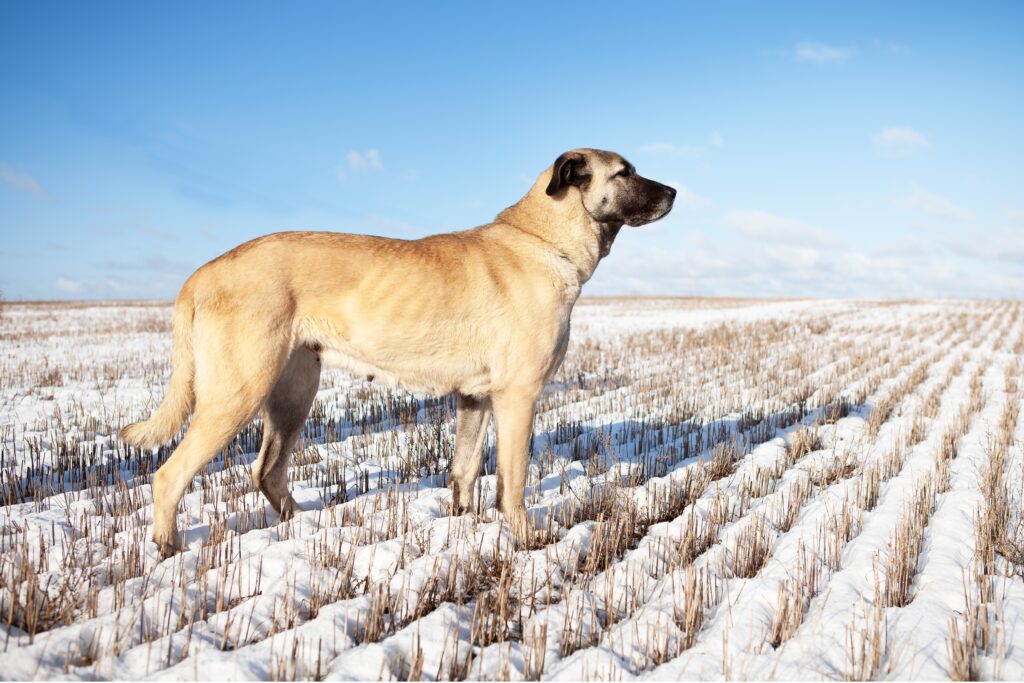
You don’t command a Kangal, you earn its partnership. This massive guardian dog hails from the Anatolian Plateau of Turkey, where it has protected flocks from wolves, jackals, and even bears for over 4,000 years. Believed to descend from early Molosser-type dogs and ancient Mesopotamian mastiffs, the Kangal was never bred for show or style. Instead, it was refined by generations of shepherds based solely on performance: strength, intelligence, and an unwavering sense of duty. In rural Turkey, Kangals are considered national treasures, trusted with the lives of both livestock and families.
It’s not just their size that stops predators in their tracks. Kangals are intensely focused, agile despite their bulk, and known for delivering one of the most powerful bites in the dog world strong enough to break bone and send wolves running. Yet with their people, they’re surprisingly gentle, even nurturing. This is the kind of dog that will nap beside a toddler and face down a bear without hesitation. They don’t do well in apartments or suburban backyards. What they need is space, purpose, and mutual respect. With a coat built for snow and sun, and instincts honed by centuries of survival, the Kangal isn’t just a guardian it’s a living legacy of the ancient working dog: pure, unflinching, and noble. Source: Veterinary Research Forum
17. Mastino Napoletano
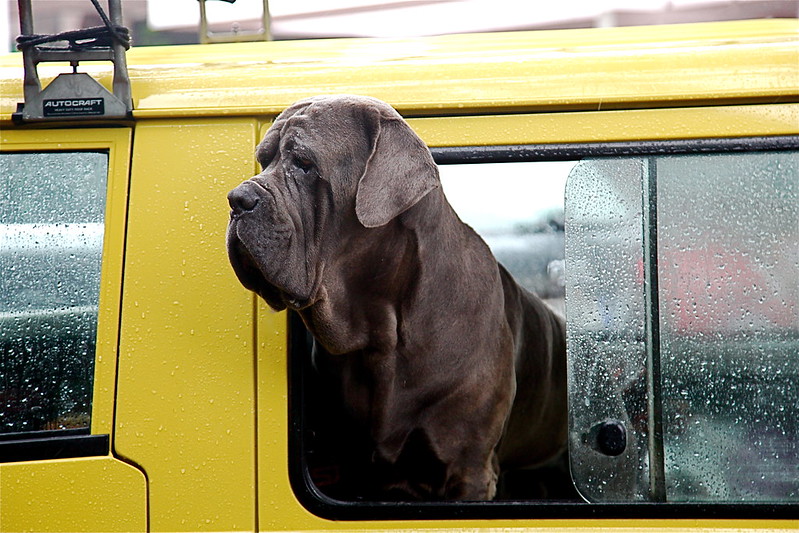
If statues could walk, they might look like the Neapolitan Mastiff. With folds of skin cascading over a massive frame and a glare that would make a burglar rethink their life choices, this breed traces its lineage directly back to the war dogs of ancient Rome. Descended from the Molossus, used in gladiator battles, military campaigns, and estate protection, the Mastino Napoletano was bred to intimidate. Its modern form was preserved in southern Italy, which remained relatively unchanged for centuries, lurking behind iron gates and stone walls.
There’s more to this dog than menace. Despite weighing up to 170 pounds and looking like a beast forged in a myth, the Neapolitan Mastiff is a deeply affectionate family companion that drools a lot and doesn’t suffer fools. Its loose skin isn’t just for effect; it protected vital organs in combat, and today, it still gives the dog an eerie, prehistoric silhouette. These dogs don’t bark unless there’s a reason, but it rumbles like thunder through your bones when they do. Owning one requires confidence, consistency, and an understanding that you’re not living with a pet, you’re coexisting with a legend. Source: American Molossus Association
18. Indian Pariah Dog

In the alleyways of Delhi and the open fields of rural India, one of the world’s most ancient dog breeds walks among humans, often unnoticed, often misunderstood. The Indian Pariah Dog, also called the INDog, evolved not through human manipulation but through natural selection. Genetic studies suggest this landrace dates back 15,000 years, possibly even earlier, making it one of the oldest domesticated dog types still alive today. These dogs have always lived close to people without becoming dependent, acting as nighttime guards, pest controllers, and alert sentinels long before dog food and leashes were invented.
They don’t need fancy grooming or special diets. With short coats, pointed ears, and lean, muscular builds, Pariah Dogs are built for endurance and survival. They learn quickly, solve problems intuitively, and read human behavior with uncanny precision. What they lack in fluff, they make up for in loyalty and low-maintenance brilliance. In rural villages, they’re trusted protectors. In cities, they navigate traffic and human chaos with quiet confidence. And though often seen as “strays,” they’re not feral, they’re free. Source: Nature Communications
19. Caucasian Ovcharka
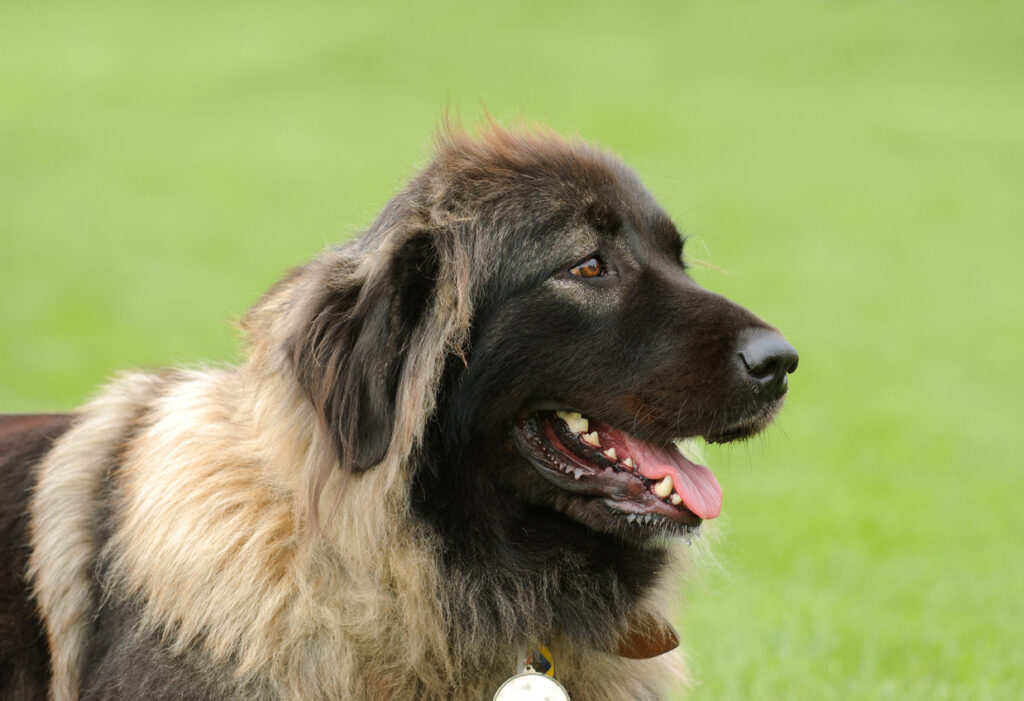
Calling the Caucasian Ovcharka a “guard dog” is like calling a lion a house cat. Developed in the rugged Caucasus Mountains over 2,000 years ago, this breed was built to fight wolves, defend livestock, and patrol vast stretches of wilderness without flinching. Ancient depictions of Ovcharka-like dogs appear in Georgian and Armenian carvings, and their lineage likely predates modern shepherd breeds entirely. They weren’t bred for beauty but to survive isolation, predators, and the brutal unpredictability of mountain life.
Everything about this dog is oversized. Its coat is dense and weatherproof. Its body, often topping 150 pounds, is muscular and imposing. Its instincts are razor-sharp. What makes the Ovcharka so compelling is its duality: it’s gentle and nurturing with its family, including children, but instantly shifts into protector mode when sensing a threat. These dogs aren’t for hobbyists. They require space, strong leadership, and purpose. But when properly understood, the Caucasian Ovcharka is not just a pet, it’s a fortress with fur. Source: Federation Cynologique Internationale
20. Greenland Dog
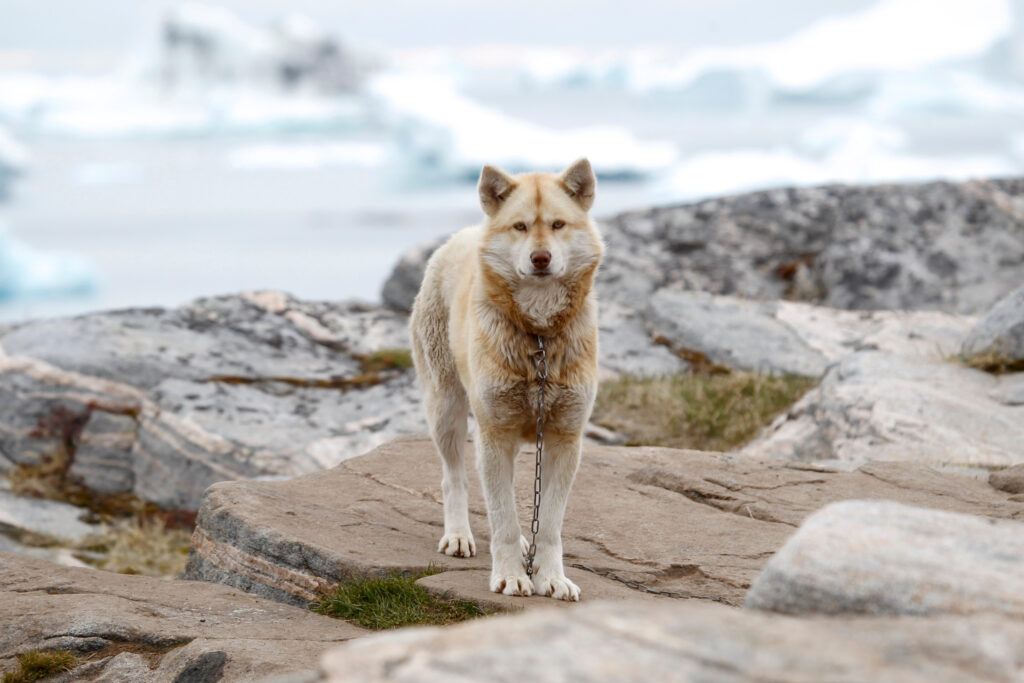
Some dogs fetch tennis balls. Others pull history through snow. The Greenland Dog is one of the oldest Arctic sled breeds, its ancestry dating back over 4,000 years. These dogs were brought to Greenland by Inuit migrants and have remained almost entirely unchanged since. They hauled supplies, hunted seal and polar bear, and endured the planet’s most brutal winters without complaint. They were so vital to survival that losing one could mean losing a life. Even today, traditional sled teams in Greenland still rely on this resilient breed to cross frozen landscapes that most humans couldn’t survive.
Built like tanks with the endurance of marathoners, Greenland Dogs are not domesticated in the traditional sense. They’re pack animals, thinkers, and doers, used to working in extreme conditions without constant direction. While affectionate with their kind, they can be indifferent or wild around people they don’t know. Their thick coats, curled tails, and deep chests are shaped by millennia of Arctic wind and ice. They aren’t pets in the suburban sense; they’re relics of a world carved in snow and silence. Source: Greenland National Museum and Archives
In a world of designer breeds and viral dog tricks, these ancient canines offer something different: a connection to the primal past. They haven’t been reshaped by fashion or flattened by generations of overbreeding. Instead, they’ve endured. Their traits are still sharp, their instincts intact, and their presence unmistakably powerful.
Owning one of these dogs means living with a piece of human history. It’s a partnership forged over centuries of trust, toil, and survival. So if you ever find yourself eye to eye with one, don’t ask it to shake paws. Just stand still. And understand what you’re looking at: a story older than language, and still very much alive.


